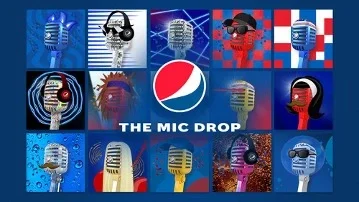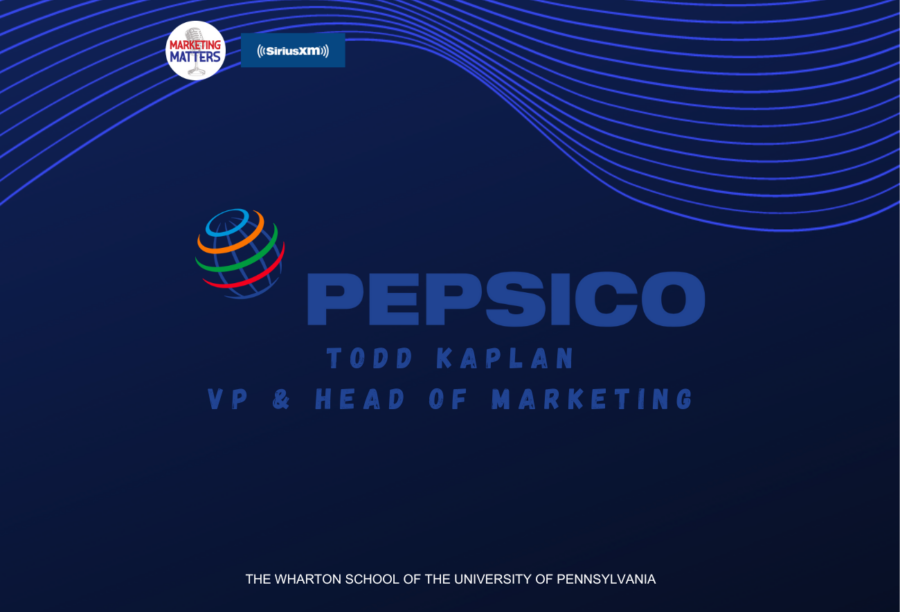The following piece is written by Wharton marketing professor Barbara E. Kahn, co-host of the Marketing Matters podcast.
Pepsi has a long history with sports and musicians; the brand is credited with inventing “lifestyle marketing” beginning in the 1980s with the relationships to Michael Jackson and Ray Charles. Pepsi doubled down in the 1990s linking the brand to Brittany Spears. Pepsi’s 10-year relationship sponsoring the Pepsi Super Bowl Halftime show is just part of this cultural heritage, linking Pepsi with the biggest names in music.
Super Bowl Halftime Show 2022 was a star-studded event on the world’s largest stage, 100 million people watch the Super Bowl every year. To put that in perspective, Madison Square Garden in NYC has an audience space of 20,000. The Super Bowl halftime show is the most viewed, most talked about music event of the year. And 2022 was a dazzler, starring Dr. Dre, Snoop Dogg, Mary J. Bilge, Eminem, Kendrick Lamar, and 50 Cent, and earned five Emmy nominations for 2022.
Todd explained that the Pepsi brand has high awareness and a strong legacy, but it is always a challenge to keep the brand relevant and to build emotion behind the brand. Pepsi’s goal is to be the most talked about brand. This year’s Super Bowl activity fulfilled that mission. For the third year in a row, Pepsi won the Twitter brand bowl MVP meaning Pepsi had the #1 share of voice among all Super Bowl advertisers. 74% of all social conversations on Twitter about Super Bowl brands were about Pepsi.
Pepsi is always thinking about new ways to bring fans closer. This year, for the first time ever, Pepsi offered a Halftime Show App so that their followers could go behind the scenes and be part of the Super Bowl action. Using augmented reality, fans could live stream the halftime show on the app and immerse themselves on stage, putting themselves next to the performers. The app also offered behind-the-scenes footage about preparations for the Halftime show — this epic content leading up to the show had 12 million views on YouTube. The Pepsi Halftime Show App was the #3 app in the app store globally.
In addition to the Halftime Show Pepsi has Super Bowl ads featuring Eli and Peyton Manning, among other NFL Stars. An interesting aspect of this ad is that it featured not just one, but many of PepsiCo’s brands: Pepsi soda, Mountain Dew, Lay’s chips, Doritos, and Tostitos salsa and chips. According to Todd, while the halftime show is an equity-driving piece of creative, about culture, about the brand’s point-of-view: “unapologetic enjoyment,” the TV spot is more portfolio-based and occasion-based, it has more of a shopper focus. Its goal is to remind people what’s best for their Super Bowl party. The ad ran during the Super Bowl and during the weeks before.

And of course, brand activation in the TV spots is supported at the Point-of-Sale in the retail stores. There was a QR code on every one of their cans that would take the consumer to the App. Big displays supporting the Super Bowl activity were placed in the lobbies of grocery stores. When we asked whether Pepsi products sold better if there were sports merchandising included, Todd responded that it’s not that transactional. Everything is connected. The Super Bowl merchandising in-store is not just for the fans, but also for PepsiCo’s “customer” — the retailer. The retailers give more display space to merchandise that features the sports teams. The whole system, all the in-store activity, television ads, social media activations, etc. all of it work together to sell more PepsiCo products around the Super Bowl event.
Bottom line, Todd said that in a year when many critics were complaining that there was little differentiation among the Super Bowl TV advertising, Pepsi’s ads were differentiated. Many of the other brands’ ads for this year’s Super Bowl over-indexed on celebrities, and in Todd’s opinion, these brands were “trying too hard.” But for PepsiCo’s brands, when you have a distinctive brand point-of-view and you execute it in a creative and culturally relevant way, people care. It doesn’t have to be the glitziest advertising, it comes down to the creative craft, and knowing who your brand is. Pepsi locked into the moment — their advertising was about football and the party — the ads were relevant, and the Super Bowl was about the halftime. It all added up to “unapologetic enjoyment.”
2022 was a big year for PepsiCo and the Super Bowl, but it also marked the end of an era. Although Pepsi will continue to be an NFL sponsor for the Super Bowl in the future, they announced that they have decided to “pass the mic’ for the half-time show to someone else for next year. PepsiCo is going to dive into digital media for upcoming projects.
PepsiCo and Web 3.0
Todd also talked to us about Pepsi’s entry into Web 3.0, NFT’s, and the Metaverse. Although acknowledging that right now the experience is not good for consumers, for example, it’s difficult for consumers to set up their digital wallets, Web 3.0 is going to be the future. The blockchain is where the future is, and PepsiCo is willing to dive in and learn. There are two advantages to NFT’s — first they are collectible, like baseball cards, only they are publicly viewable. Second, they are contractable so that artists can get a digital percentage in perpetuity from every sale of their art. This changes the game for the creators. As consumers get more comfortable with virtual spaces and the Metaverse, we will see digital assets become much more important.

PepsiCo feels the best way to learn about all of this, is by doing; go down the rabbit hole, maybe you screw up a couple of times, but you learn. With this in mind, Pepsi created their first NFT collection called the Pepsi mic drop. Given their heritage in music, Pepsi created virtual NFT microphones with art that live on the Ethereum blockchain. They created 1,893 of them (to mark the year Pepsi was born) and gave them out to consumers for free. Soon after, in the secondary sale market, consumers sold over $6.5 million of them in the first week alone with 100% of profits going to them.
The Future for PepsiCo
PepsiCo is always innovating in its marketing. Old-school advertising is going to go away, and PepsiCo has to use horizontal vision to see what other platforms are out there. They will go to the metaverse, to NFTs, to content creation. They currently created their own tv shows, a primetime game, a reality dating show for MTV, and a documentary on Showtime about the making of the Pepsi Super Bowl halftime show.
Bottom line, according to Todd Kaplan, how you show up as a brand, is not about buying tv spots from an agency where you wait 5 months for the brief to come back and forth. Because the speed of culture changes so quickly today; you need to be agile, you need to be in the right places organically, wherever.



